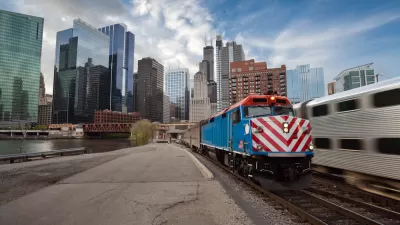Companies are marketing battery-electric buses as the transit vehicles of the future, but there is still much room for improvement.

Alon Levy reports that cities in the United States and Europe are starting to look at battery-electric buses (BEBs) as an environmentally friendly, zero-emissions alternative for their fleets.
However, the performance of BEBs in cities across the country has been inconsistent. Battery range has been a big issue, with BEBs not able to travel nearly as far as fuel-powered buses. The need to recharge during the day is costly and labor intensive, and buses out of commission for charging means more vehicles are needed to maintain the same capacity.
BEBs also appear to have problems both in cold and hot weather, when batteries drain more quickly and vehicles subsequently struggle with a decrease in range.
One alternative is in-motion charging (IMC), which involves outfitting a trolleybus with a small battery and allows the vehicles to go off-grid. IMC is gaining ground in Europe, but the focus in the United States has remained largely on BEBs, says Levy.
While IMC does require overhead wire, Levy notes that BEB technology does not appear ready for widespread use. He suggests that American cities instead follow the lead of European cities putting in trolleybus networks with IMC.
FULL STORY: The Verdict's Still Out on Battery-Electric Buses

Study: Maui’s Plan to Convert Vacation Rentals to Long-Term Housing Could Cause Nearly $1 Billion Economic Loss
The plan would reduce visitor accommodation by 25,% resulting in 1,900 jobs lost.

Alabama: Trump Terminates Settlements for Black Communities Harmed By Raw Sewage
Trump deemed the landmark civil rights agreement “illegal DEI and environmental justice policy.”

Why Should We Subsidize Public Transportation?
Many public transit agencies face financial stress due to rising costs, declining fare revenue, and declining subsidies. Transit advocates must provide a strong business case for increasing public transit funding.

Paris Bike Boom Leads to Steep Drop in Air Pollution
The French city’s air quality has improved dramatically in the past 20 years, coinciding with a growth in cycling.

Why Housing Costs More to Build in California Than in Texas
Hard costs like labor and materials combined with ‘soft’ costs such as permitting make building in the San Francisco Bay Area almost three times as costly as in Texas cities.

San Diego County Sees a Rise in Urban Coyotes
San Diego County experiences a rise in urban coyotes, as sightings become prevalent throughout its urban neighbourhoods and surrounding areas.
Urban Design for Planners 1: Software Tools
This six-course series explores essential urban design concepts using open source software and equips planners with the tools they need to participate fully in the urban design process.
Planning for Universal Design
Learn the tools for implementing Universal Design in planning regulations.
Smith Gee Studio
Alamo Area Metropolitan Planning Organization
City of Santa Clarita
Institute for Housing and Urban Development Studies (IHS)
City of Grandview
Harvard GSD Executive Education
Toledo-Lucas County Plan Commissions
Salt Lake City
NYU Wagner Graduate School of Public Service




























